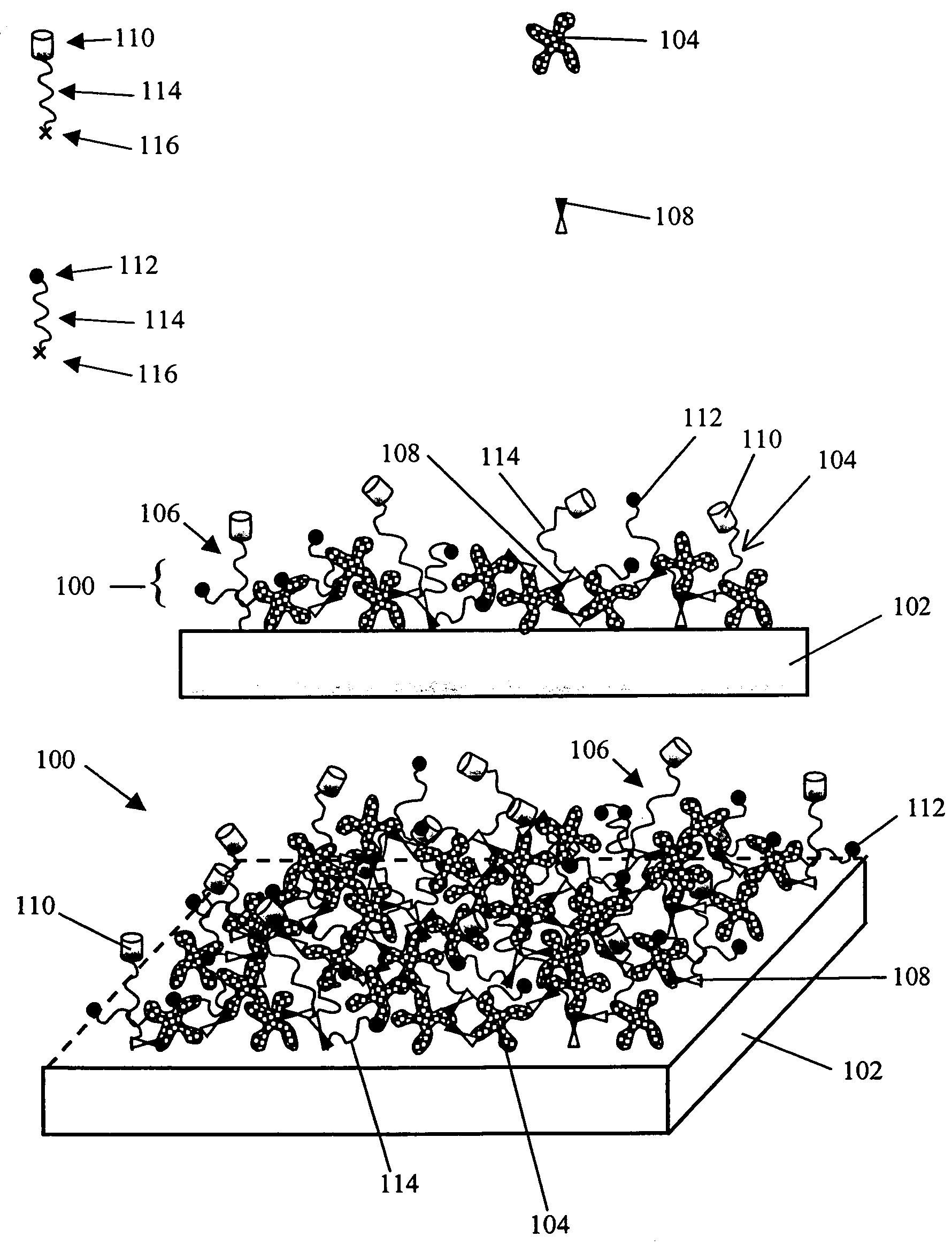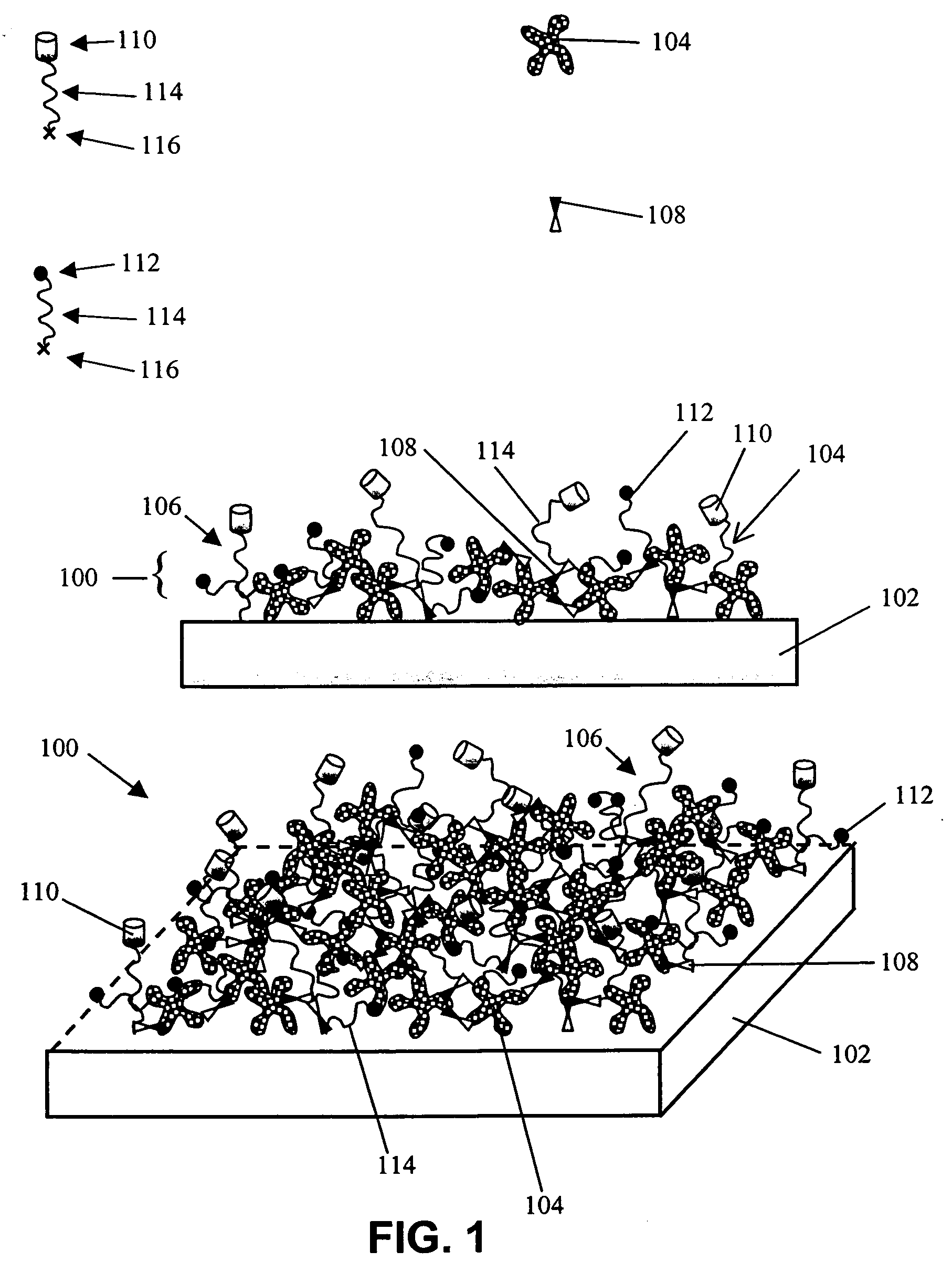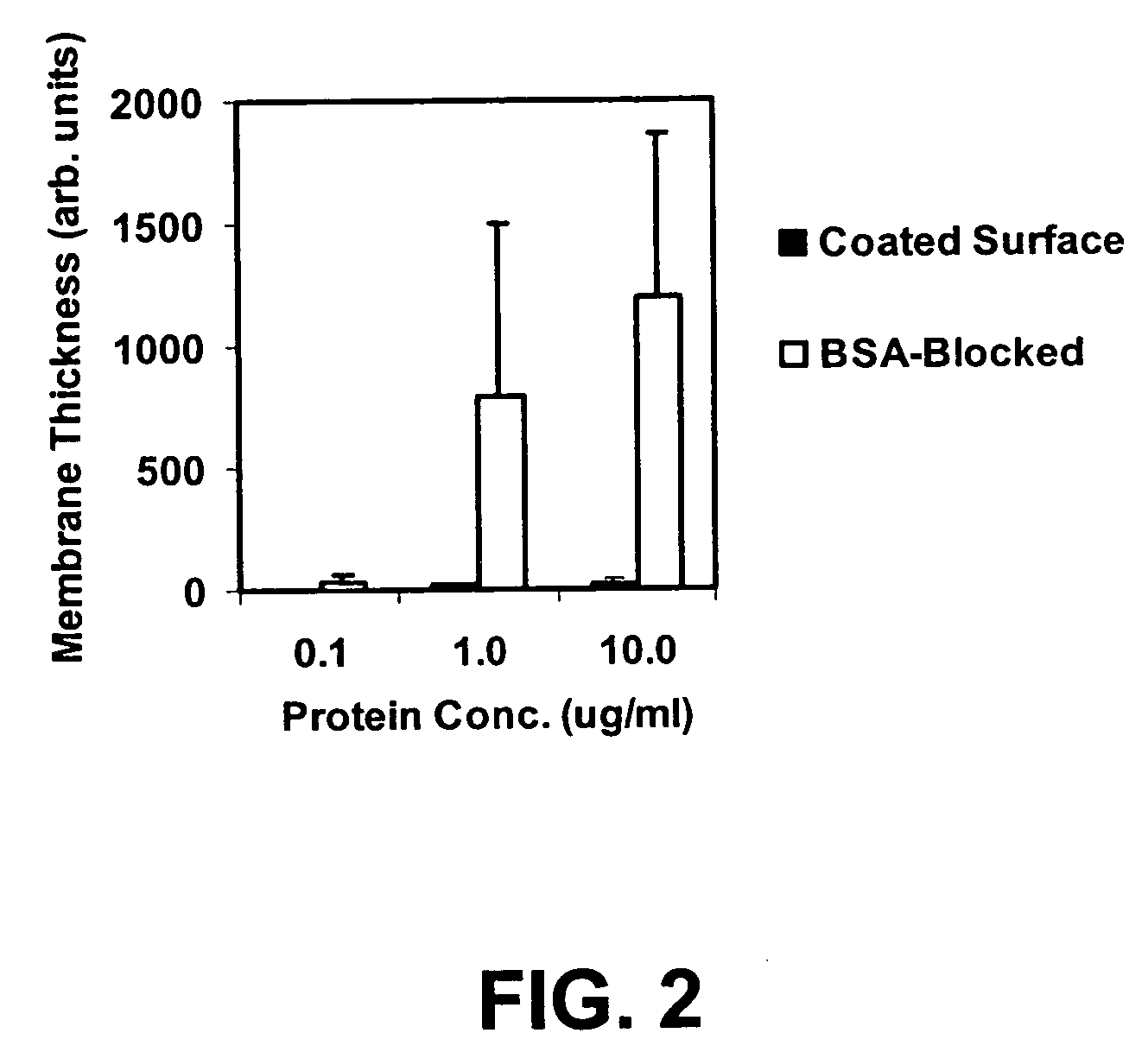Hydroxyl functional surface coating
a functional surface coating and hydroxyl technology, applied in coatings, instruments, material analysis, etc., can solve the problems of undesired infection, inflammatory response of biomedical implants, device failure or rejection, etc., to inhibit non-specific binding of solutes
- Summary
- Abstract
- Description
- Claims
- Application Information
AI Technical Summary
Benefits of technology
Problems solved by technology
Method used
Image
Examples
example i
Low Non-Specific Binding (NSB) Biotinylated Surface Coating Chemistry on a SiO2 / Si Substrate
[0131] The following example illustrates the utility of an embodiment of the present invention for limiting NSB of a protein to a treated SiO2 / Si substrate. A coating solution was prepared and used to form a low NSB, biotinylated, surface coating on a flat SiO2 / Si substrate. Experiments tested the level of non-specific binding to either an untreated SiO2 / Si substrate or to the low NSB, biotinylated, surface-coated SiO2 / Si substrate.
[0132] Coating Solution Preparation. An aminosilane solution in organic solvent was prepared in a polypropylene vial by adding 26.5 μl (3-trimethoxysilylpropyl)-diethylenetriamine (Gelest) to 10 ml of solvent. Either dimethyl sulfoxide (DMSO) or n,n-dimethylacetamide (DMAC) can be used as the solvent (both from Aldrich). 1.0 ml of this solution was then added to a 40 mg aliquot of biotin-PEG-CO2—N-hydroxysuccinimidyl (Biotin-PEG-NHS, Shearwater Polymers, Inc.), w...
example ii
Low Non-Specific Binding (NSB) Thiol-Reactive Surface Coating Chemistry on SiO2 / Si Substrates
[0142] The following example illustrates the utility of another embodiment of the present invention for limiting NSB of a protein to a treated SiO2 / Si substrate. A coating solution was prepared and used to form a low NSB, thiol-reactive, surface coating on a SiO2 / Si substrate. Experiments were performed to test the level of non-specific binding to either an untreated SiO2 / Si substrate or to the low NSB, thiol-reactive, surface coated SiO2 / Si substrate.
[0143] Coating Solution Preparation. The coating solution was prepared as essentially described in Example I, with the exception that the Biotin-PEG-NHS was replaced with vinylsulfone-PEG-NHS (Shearwater). Spin coating was also performed as essentially described in Example I.
[0144] The spin coated wafers were placed in a vacuum oven pumped down to a vacuum of 150 mm Hg (absolute) for 30 minutes. The oven was then turned on and allowed to hea...
example iii
Low Non-Specific Binding (NSB) Biotinylated Surface Coating Chemistry on Plastic (Polymeric) Substrates
[0150] The following example illustrates the utility of an embodiment of the present invention for limiting NSB of a protein to a plastic (polymeric) substrate. A coating solution was prepared and used to form a low NSB, biotinylated, surface coating on the plastic substrate, e.g., polystyrene, polysulfone, polyetherimide, and polyethersulfone. Experiments were performed to test the level of non-specific binding to either an untreated plastic substrate or to the low NSB, biotinylated, surface coated plastic substrate.
[0151] Polystyrene (PS). The polystyrene substrates consisted of 3-inch hydrophobic disks approximately 2 mm thick. The disks were cut from bacteriological grade polystyrene Petri dishes (VWR). The coating solution preparation was identical to that described in Example I. Prior to coating the polystyrene Petri dishes with the coating solution, an oxidation step was p...
PUM
| Property | Measurement | Unit |
|---|---|---|
| Surface | aaaaa | aaaaa |
| Hydrophilicity | aaaaa | aaaaa |
Abstract
Description
Claims
Application Information
 Login to View More
Login to View More - R&D
- Intellectual Property
- Life Sciences
- Materials
- Tech Scout
- Unparalleled Data Quality
- Higher Quality Content
- 60% Fewer Hallucinations
Browse by: Latest US Patents, China's latest patents, Technical Efficacy Thesaurus, Application Domain, Technology Topic, Popular Technical Reports.
© 2025 PatSnap. All rights reserved.Legal|Privacy policy|Modern Slavery Act Transparency Statement|Sitemap|About US| Contact US: help@patsnap.com



